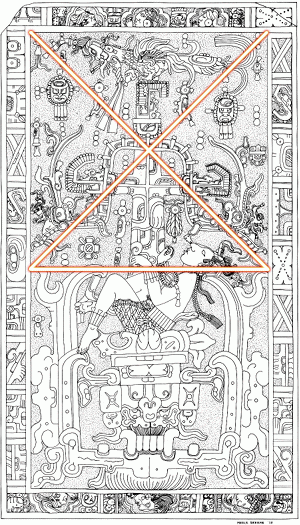Taking a look at the lid, it is almost immediately noticeable that the pattern clearly has a break inside it:
As you can see, above this line the drawing is very detailed, containing a lot of small decorating (?) items, while it is sketchy and without any ornamental elements below.
After further examination the upper part turns out to be exactly a square:
One can come to the assumption, that the upper square is the actual relevant portion of the pattern, while the lower part serves only the purpose of piecing out the drawing to the shape of a human (thus rendering it usable as a sarcophagus lid).
Concentrating on the upper square and the (supposed) ornaments we can find further curiosities. Just take a look e.g. on these parts:
It seems as if the triplets (the three-circled items) had been placed on their positions before the other shapes, and those other figures had the function of filling and decorating the space between the triplets (and not vice versa)!
So, our suspicion could be that the triplets are not just pointlessly scattered around the lid, but rather they and their positions might play an important role and have even some deeper meanings. In the next steps we will try to find a way to uncover this (assumed) hidden sense.



